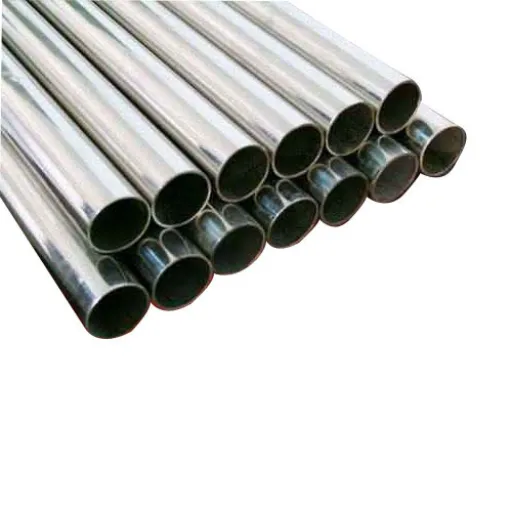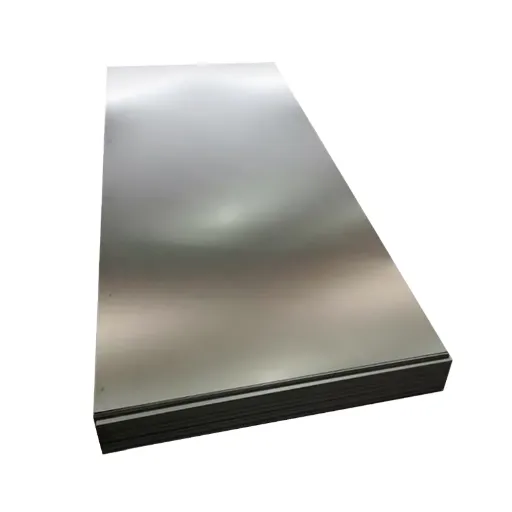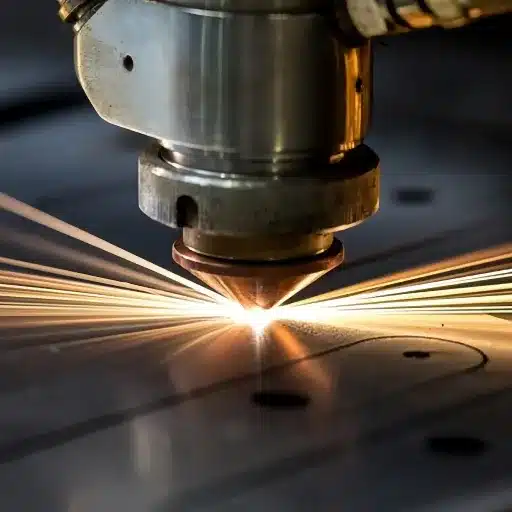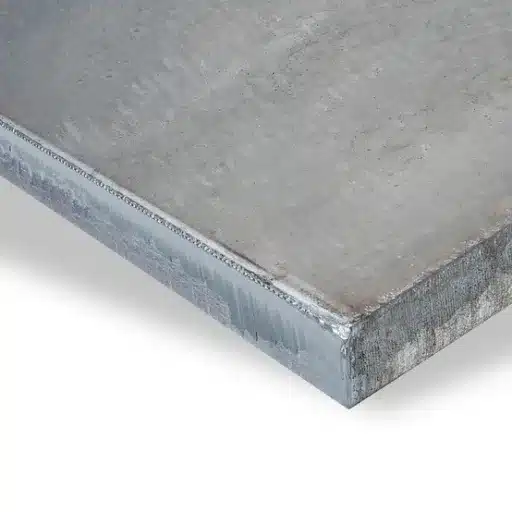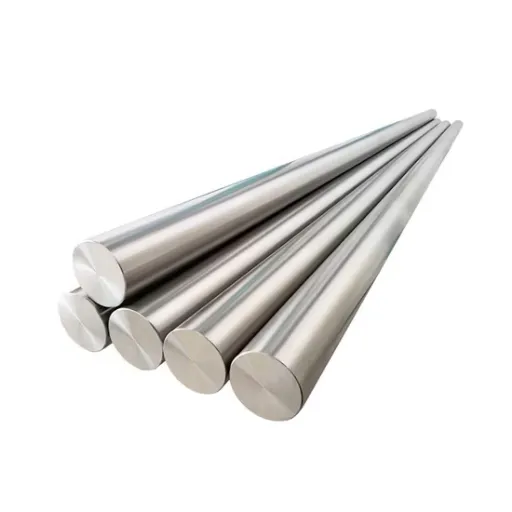Tool steels like A2 and O1 have much in common, yet each presents a differentiated array of features for the myriad of applications. A machinist might require a grade that allows for tooling on CNC programs; a blacksmith might need a type of steel suitable for forging; an individual might simply be stepping into the vast field of high-performance tool steel. The distinctive properties of the two steels must always be considered when selecting the appropriate material for the job.
This comprehensive guide provides a detailed comparison of the key differences between A2 and O1 tool steel, their benefits, and ideal applications, enabling you to make informed decisions. After reading this, there will be no question in your mind about which steel works best for you, thereby ensuring that your projects will operate at peak performance and last through time.
Introduction to A2 and O1 Tool Steel
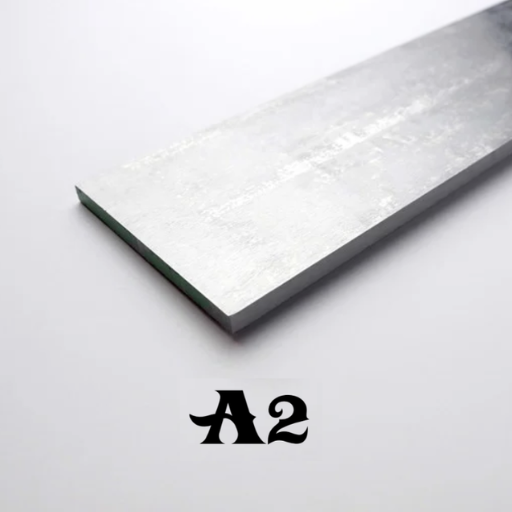
Widely recognized in the tool-making field for their strength and durability are grades A2 and O1 of steel. While A2, being an air-hardening steel, offers excellent toughness, wear resistance, and dimensional stability during heat treatment, O1 is an oil-hardening steel that provides greater edge retention and is easier to machine and sharpen.
The principal difference lies in their hardening methods and properties, presenting A2 as suitable for tools that demand more impact resistance and O1 for applications where a keen edge and much more precision are desired. It is these differences that determine the choice between the two, depending on the specific needs of your project.
What is A2 Tool Steel?
A2 is primarily a mid-range tool steel suitable for general use in making dies and tools that require precise machining. It is designed for excellent toughness, dimensional stability, and moderate wear resistance.
What is O1 Tool Steel?
O1 tool steel is a high-carbon, oil-hardening tool steel, renowned for its ability to attain a very sharp edge, ease of machining, and high dimensional accuracy, making it ideal for cutting tools, knives, and dies.
Typical Applications of A2 and O1 Steel
In high-demand, high-performance work, the A2 and O1 steels offer perfect serviceability. Below are some of the most common applications of the two steels:
Cutting Tools
A2 Steel: Industrial cutting tools of all types are made with A2 steel due to its toughness and resistance to chipping.
O1 Steel: With its ability to hold a sharp edge, O1 steel is well-suited for knives, chisels, and precision cutting tools.
Punches and Dies
A2 Steel: Due to its high wear resistance and ability to maintain dimensional stability during operation, A2 steel is highly suitable for punches and dies.
O1 Steel: Also used for dies that require finer detailing due to its ease of machining and excellent edge retention.
Plastic Injection Molds
A2 Steel: Well-suited for plastic injection molds due to its excellent resistance to cracking and deformation. Its resistance to dimensional changes at various temperatures guarantees mold precision after repeated use.
Blades and Knives
A2 Steel: Specially made for high-performance blades that require resilience and durability, such as outdoor knife applications and tactical knives.
O1 Steel: Popular for custom knives and woodworking tools because it can take a very fine edge and maintain it.
Tooling Components
A2 Steel: The toughness and impact resistance qualify it as an excellent choice for tooling components in heavy-duty machinery.
O1 Steel: Utilized to produce fine hand tools, gauges, and intricate mechanical components applied in various industries.
Key Takeaway: Each of these steels offers its respective strengths as A2 and O1 provide specialized solutions for every requirement put forth by manufacturing, construction, and tooling industries.
Comparative Analysis of A2 vs O1 Tool Steel

| Key Parameter | A2 Tool Steel | O1 Tool Steel |
|---|---|---|
| Hardening Process | Air-hardened | Oil-hardened |
| Edge Retention | Longer-lasting | Shorter-lasting |
| Sharpening Difficulty | Harder to sharpen | Easier to sharpen |
| Toughness | Lower toughness | Higher toughness |
| Dimensional Stability | High | Low |
| Wear Resistance | Good | Excellent |
| Brittleness | Less brittle | More brittle |
| Cost | Higher | Lower |
| Ideal Applications | Precision tools, dies | Cutting tools, knives |
| Bevel Angle Range | 33°-35° | 25°-30° |
| Cryogenic Treatment | Improves toughness | Not commonly used |
| Environmental Impact | Higher energy use | Lower energy use |
Composition and Properties of A2 Steel
Air-hardening medium alloy steel is listed for its high toughness and resistance to wear. The elements that compose the steel ensure the properties of balanced strength, hardness, and machinability.
Chemical Composition of A2 Steel:
- Carbon (C): 0.95-1.05% – For hardness and wear resistance
- Chromium (Cr): 4.75-5.50% – For corrosion resistance and toughness
- Molybdenum (Mo): 0.90-1.40% – For resistance to high temperature and strength
- Vanadium (V): 0.15-0.50% – For wear resistance and finer grain
- Manganese (Mn): 0.90-1.20% – For hardenability and increasing toughness
- Silicon (Si): 0.50% max – For strength and deoxidizing steel during manufacture
Key Properties of A2 Steel:
- Air Hardenability: Reduces the risk of dimensional distortion during heat treatment process, unlike water or oil quenching
- Hardness Range: 57-62 HRC when properly heat-treated and hardened
- Excellent Machinability: In the annealed condition, facilitating manufacturing
- Wear Resistance: Superior performance under heavy-duty conditions
- Stress Resistance: Excellent resistance to cracking under stress
Composition and Properties of O1 Steel
O1 steel is a high-carbon, oil-hardening tool steel used for its versatility and excellent edge-holding capabilities. It is characterized by hardness, wear resistance, and a heat treatment process for a stronger, more durable life.
Chemical Composition of O1 Steel:
- Carbon (C): 0.85–1.00% – Strengthens and hardens the steel
- Manganese (Mn): 1.00–1.20% – Improves hardenability and wear resistance
- Chromium (Cr): 0.40–0.60% – Enhances corrosion resistance and toughness
- Tungsten (W): 0.40–0.60% – Improves strength and grain refinement
- Vanadium (V): 0.15–0.30% – Enhances wear resistance and prevents grain growth
- Silicon (Si): 0.15–0.40% – Enhances elasticity and strength
Key Properties of O1 Steel:
- Hardness: Achieves approximately 57–62 HRC upon oil quenching, ideal for cutting and shaping applications
- Toughness: Retains toughness to resist chipping and cracking during tough usage
- Dimensional Stability: Excellent stability during heat treatment, resulting in minimal deformation
- Wear Resistance: Superior resistance to wear, suitable for critical applications
- Versatility: Can be machined easily in annealed state and responds well to heat treatment
Strength and Hardness Comparison
| Key Parameter | A2 Tool Steel | O1 Tool Steel |
|---|---|---|
| Hardness (HRC) | 57-62 HRC | 58-64 HRC |
| Strength | High wear resistance | High toughness |
| Toughness | Moderate | High |
| Edge Retention | Longer-lasting | Shorter-lasting |
| Brittleness | Less brittle | More brittle |
| Abrasion Resistance | Good | Excellent |
| Impact Resistance | Moderate | High |
| Heat Treatment | Air-hardened | Oil-hardened |
| Ideal Applications | Precision tools, dies | Cutting tools, knives |
Benefits and Drawbacks of A2 and O1
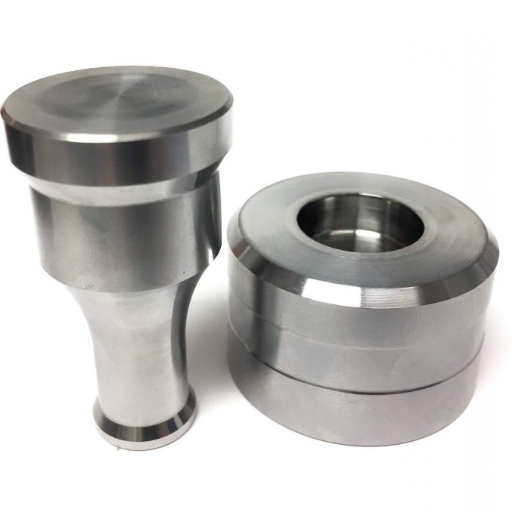
| Parameter | A2 Benefits | A2 Drawbacks | O1 Benefits | O1 Drawbacks |
|---|---|---|---|---|
| Hardness | Long-lasting edge retention | Harder to sharpen | Sharper edge achievable | Dulls faster |
| Toughness | Moderate toughness | Lower impact resistance | High toughness | Prone to brittleness |
| Dimensional Stability | High stability during hardening | Higher cost | Affordable | Warping during hardening |
| Wear Resistance | Good abrasion resistance | Less than O1 | Excellent wear resistance | Requires frequent sharpening |
| Sharpening | Retains edge longer | Difficult to hone | Easy to sharpen | Needs frequent sharpening |
| Applications | Precision tools, dies | Not ideal for high impact | Cutting tools, knives | Limited dimensional stability |
| Cost | Higher cost | Expensive for budget projects | Lower cost | May require frequent replacements |
Detailed Advantages and Disadvantages
Advantages of A2 Tool Steel
- High Wear Resistance: Very good wear resistance, making it suitable for applications requiring long periods of use in harsh conditions
- Good Edge Retention: Longer-lasting edge retention, preferred by craftsmen and precision tool users
- Moderate Toughness: Maintains a balance of both toughness and wear resistance
- Air-Hardened: Less involved heat treatment with reduced chance of distortion and cracking
- Good Abrasion Resistance: Excellent performance for tools subjected to abrasive conditions
Disadvantages of A2 Tool Steel
- Lower Impact Resistance: Less suited for high-impact or shock-load applications
- Hard to Machine: Can result in longer lead times and higher production costs
- Expensive Materials: Higher cost compared to other tool steel varieties like O1
- Corrosion-prone: Needs proper care to prevent rust, especially in humid environments
- Less Ductility: Less bendable, unsuitable for applications requiring high ductility
Advantages of O1 Tool Steel
- Excellent Wear Resistance: Superior wear resistance due to high carbon and manganese content
- Good Hardenability: Becomes uniformly and consistently hard through heat treatment
- Ease of Machinability: Relatively easy to machine in annealed condition, reducing time and costs
- High Dimensional Stability: Retains shape and size after heat treatment
- Economical and Readily Available: Cost-effective compared to other high-performance tool steels
Making the Right Steel Choice: A2 or O1?
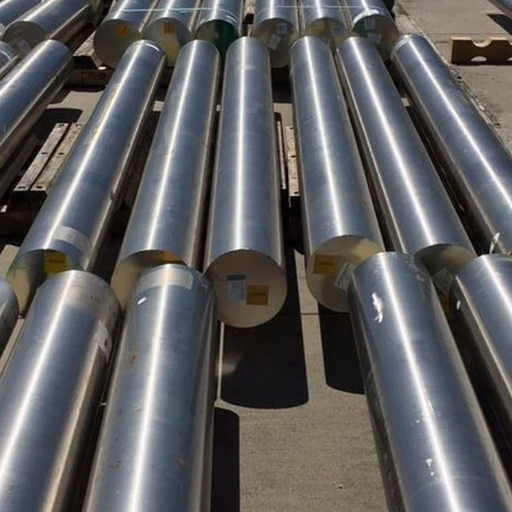
Choose A2 when you need:
- Enhanced wear resistance, grit, and toughness in extreme, heavy-duty conditions
- Air-hardening properties with less distortion from heat treatment
- Precision tools that require dimensional stability
- Long-term performance and durability
Choose O1 when you need:
- A more affordable option with good machinability
- High dimensional stability after heat treatment
- Easy sharpening and maintenance
- General-purpose tools with moderate performance requirements
Factors to Consider When Choosing Tool Steel
When selecting the appropriate tool steel for your project or application, several key factors must be considered to ensure optimal performance, durability, and cost-effectiveness:
- Wear Resistance: Tool steel must withstand repeated use and abrasive wear. For severe friction or cutting applications, select high wear-resistant materials like D2 or A2 steel.
- Toughness: The steel’s ability to resist chipping or cracking upon stress or impact. Applications like punches or dies require high-toughness materials such as S7 steel.
- Hardness: Defines resistance to plastic deformation under load. Higher hardness is required for cutting tools and edge retention but usually means lower toughness.
- Machinability: The ease with which tool steel can be shaped and finished. Steels like O1 and P20 offer high machinability to reduce production complexity and costs.
- Heat Resistance: Important for high-temperature applications. Steels such as M2 or H13 maintain mechanical properties under extreme heat conditions.
Recommendations for Specific Applications
Cutting Tools & Wear Applications
Use highly wearable tool steel like D2 for superior performance and longevity.
High Impact Applications
S7 and similar steels are suitable when high impact toughness is demanded.
High Temperature Applications
H13-type steels are suitable for elevated temperature resistance and hot-working tools.
Conclusion: A2 vs O1 – Which One to Choose?
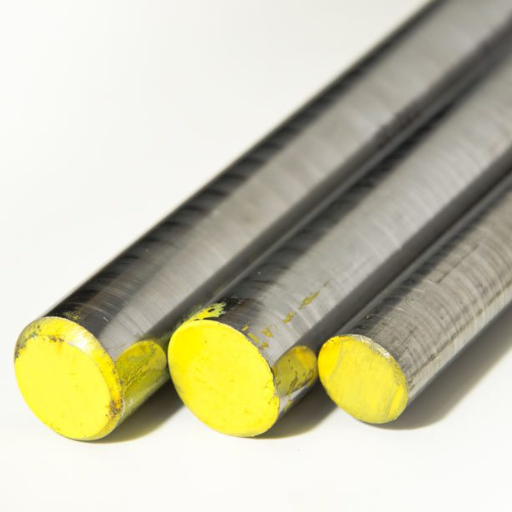
The decision between tool steels A2 and O1 depends greatly on the requirements of your specific application and working conditions.
A2, an air-hardening tool steel, provides a fine balance of toughness, wear resistance, and dimensional stability. It is best suited to applications where steady, consistent performance is desired over time. Its air-hardening nature means less distortion during heat treatment compared to oil-hardening steels.
O1 is optimal for cost-efficient and simple machining situations. As an oil-hardened tool steel with excellent edge retention, it’s well-suited for precision tools, knives, and cutting applications, though it may not be the best choice when dimensional stability after heat treatment is critical.
Industry Comparison Summary:
- A2 steel typically achieves 57-62 HRC hardness, indicating high abrasion resistance and longer-lasting performance under sustained wear
- O1 steel is typically hardened to 58-64 HRC, providing a harder edge but less impact resistance compared to A2
Final Recommendation: Choose A2 where durability and low warping during heat treatment are priorities. Select O1 when price is a key factor and when sharpness and precision are paramount. Careful consideration of your specific tool or component requirements will make the decision clear for optimal performance.
Frequently Asked Questions (FAQ)
Composition and properties are major differentiators. A2 is an air-hardening tool steel with moderate chromium content, providing enhanced toughness and wear resistance. O1 is an oil-hardening steel with simpler composition, offering enhanced edge retention but considered less tough than A2.
A2 involves air hardening and can harden slowly at room temperature to develop stable grain structure and hardness. O1 heat treatment consists of oil quenching after heating, which can produce warping if quenching challenges aren’t properly addressed.
A2’s fine grain structure permits honing to very sharp edges, making it easier to sharpen. O1 might be more difficult to sharpen due to its high carbon content, which can be abrasive during the sharpening process.
A2 steel retains its edge longer than O1 because its alloy composition promotes formation of chromium carbides, contributing to superior wear resistance. O1 provides good edge retention but may not perform as well as A2 under prolonged usage.
Woodworking generally prefers A2 for its toughness and edge retention abilities, especially for plane blades. Some choose O1 for its ease in sharpening and adequate performance in less demanding work.
Yes, A2 can be used for hock iron. Its toughness and excellent edge retention make it suitable for tools requiring durability and repeated use. A2’s fine-grained structure also enables superior honing ability for sharper cutting edges.
References
- ScienceDirect: “Peak strength, strain hardening and dynamic restoration of A2 and M2 tool steels in hot deformation” – Detailed research on A2 tool steel properties and behavior
- Taylor & Francis: “Tool steels: properties and performance” by Rafael Mesquita – Comprehensive coverage of tool steels including A2 and O1
- ASM International Handbooks: “Tool Steels” chapter – Authoritative source on characteristics and performance of various tool steels

